Slip, Stumble, Survive: Sanchit’s Chadar Trek with Thrillophilia
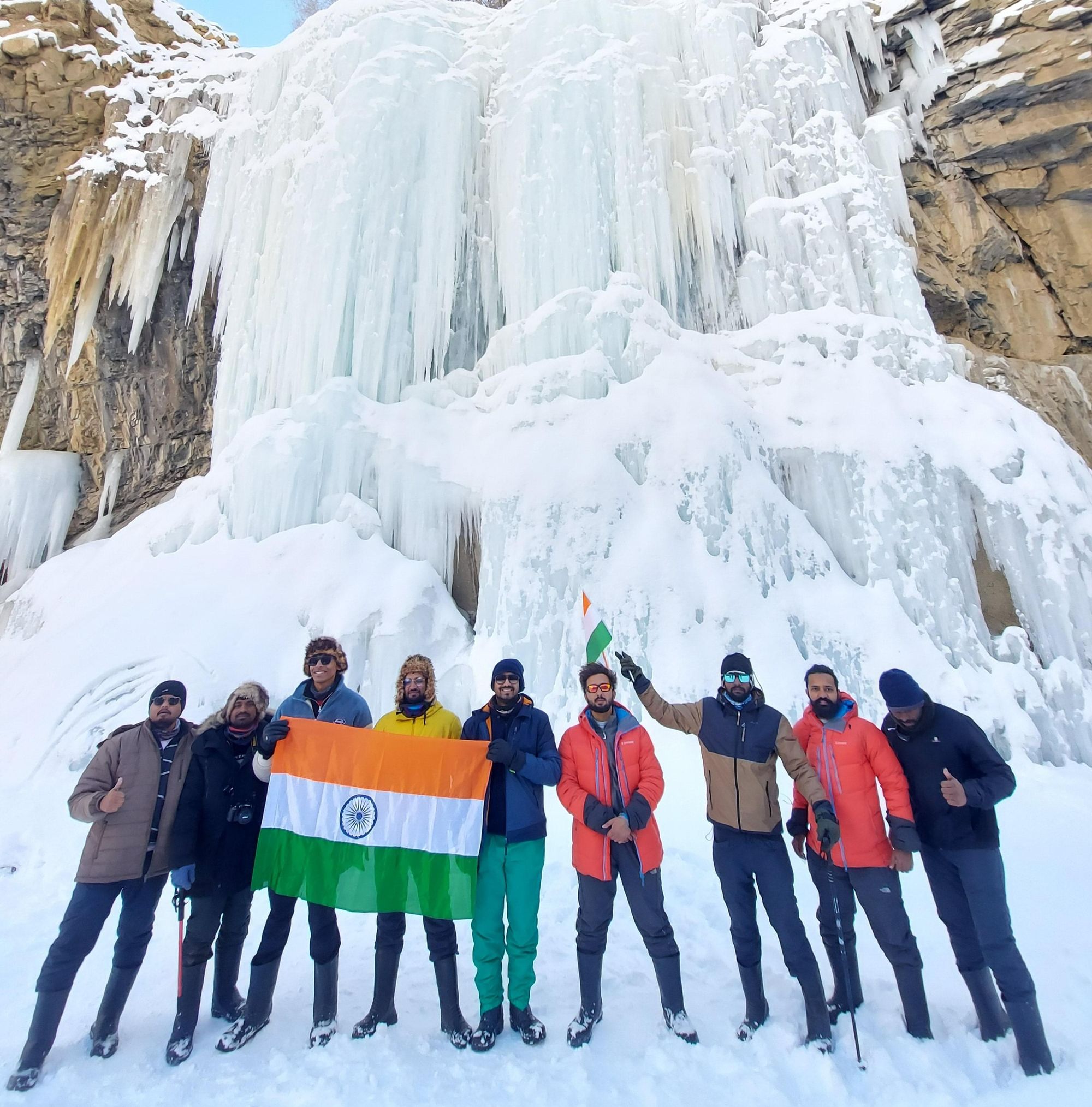
"The frozen bed is just 5 metres wide," Omkar, our trek leader, cautioned. “We have to be very careful, otherwise, we could slip into the lake. Be steady with your grip and do not panic. We’ll have to pass this very, very, very carefully."
And that was it. The moment those words left his mouth, my mind spiralled into chaos.
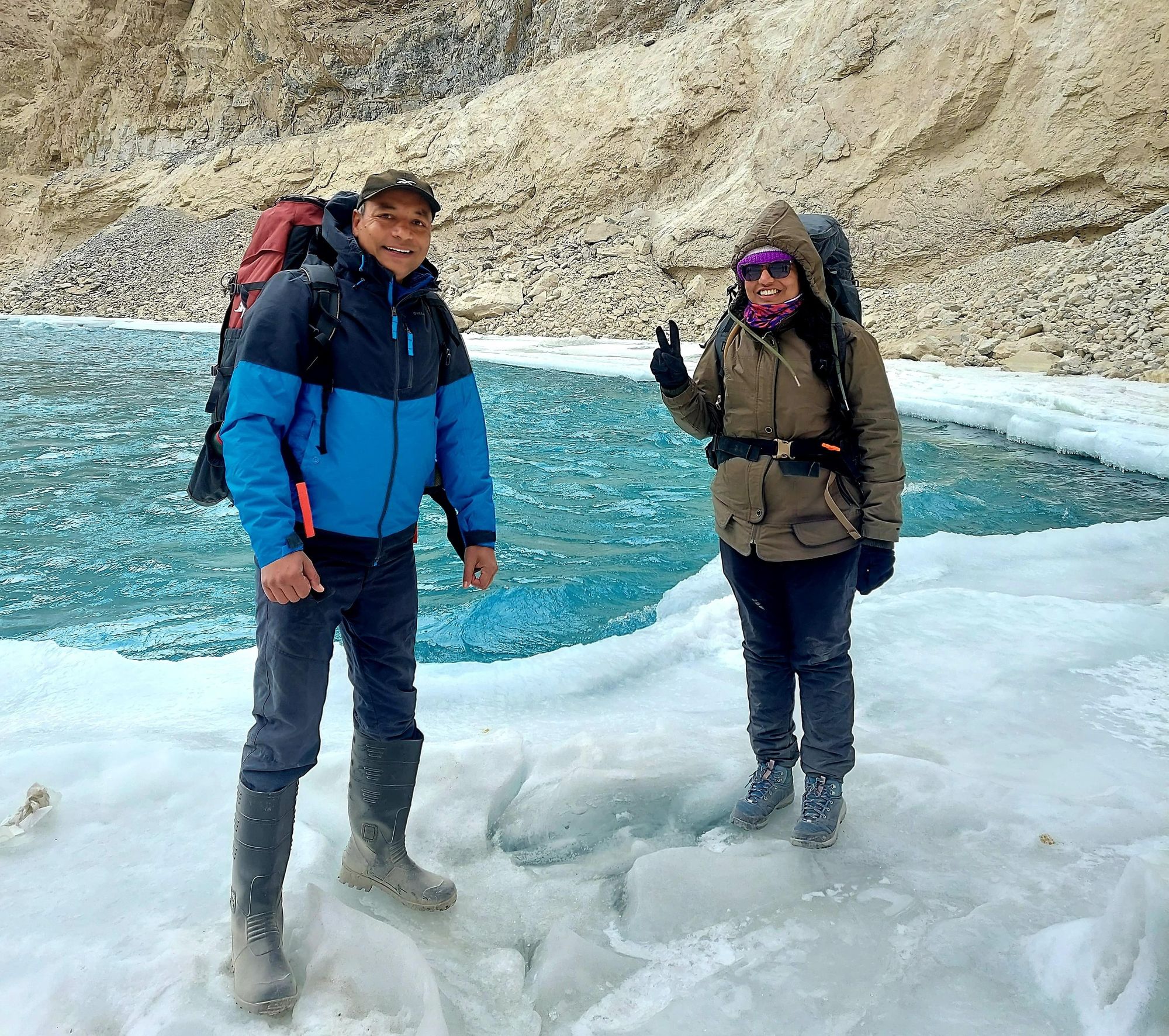
How it all started…
My friends and family all called me crazy for attempting something this dangerous. They warned me, and teased me about my crazy passion for trekking. And it's not my first trek, but this? This was THE pilgrimage of all treks.
This trek hits you with a number of challenges— Extreme weather conditions, long stretches of walking, unpredictable weather conditions, and the mother of all AMS- Acute Mountain Sickness.
But here I was walking on the frozen Zanskar river, doing exactly what I’d been warned for. It was more than just a trek for me, a goal I wanted to accomplish since I started trekking.
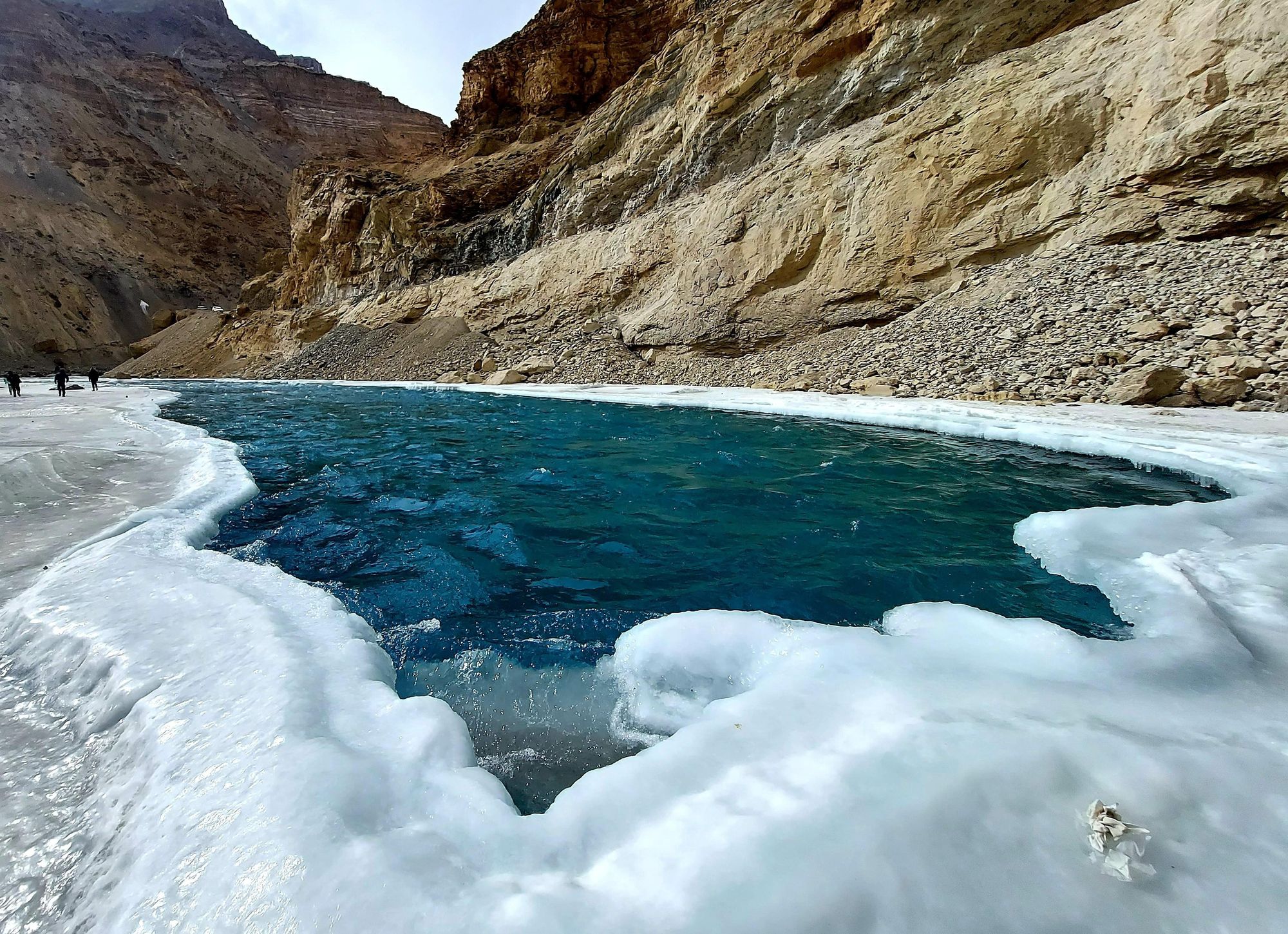
All these thoughts and more started travelling inside my head.
I stiffed my mind, and tried controlling it to focus on the path right now, but it kept on wandering, from the day I started packing, to the day of my health checkup in Delhi and then again in Leh or the day of briefing.
Just as I was lost in my thoughts…
My friend pulled me back.
Apparently, I had wandered too close to the unfrozen part of the river. It was a sharp reminder to keep my focus on the present—on the icy path beneath my feet and on Omkar’s voice guiding us through it.
Suddenly, I started feeling heavy. I was breathing, but it wasn’t enough. And the next few things were a bit disconnected. It was like bits and pieces, more like fragments.
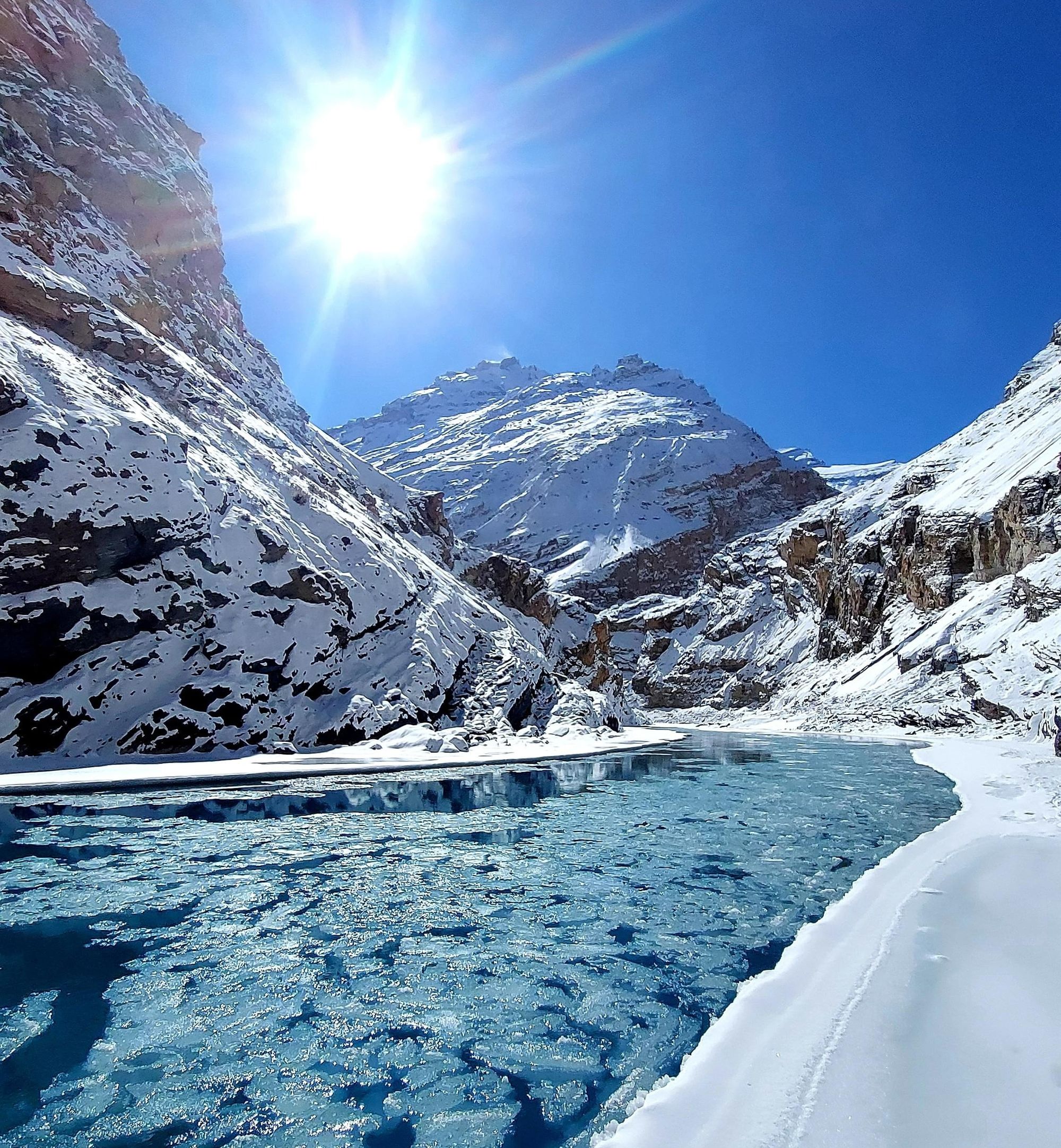
My vision blurred, I was on the ground, Omkar rubbing my chest, my friend offering water, and an oxygen mask.
Blackness.
Then, white.
Everything was so white, like the King’s Cross Station from Harry Potter. I gulped in a deep breath and heard the sighs of relief from my team. I was alive.
Planning a trip to Kashmir, Check out Thrillophilia Reviews
Not just alive, but better than ever. I had just been reborn in one of the most treacherous, breathtaking places in the world—Ladakh, 14,000 feet above sea level, with -30-degree temperatures.
And so I continued my pilgrimage, my tirath, my goal—- Chadar Trek, the frozen river trek.
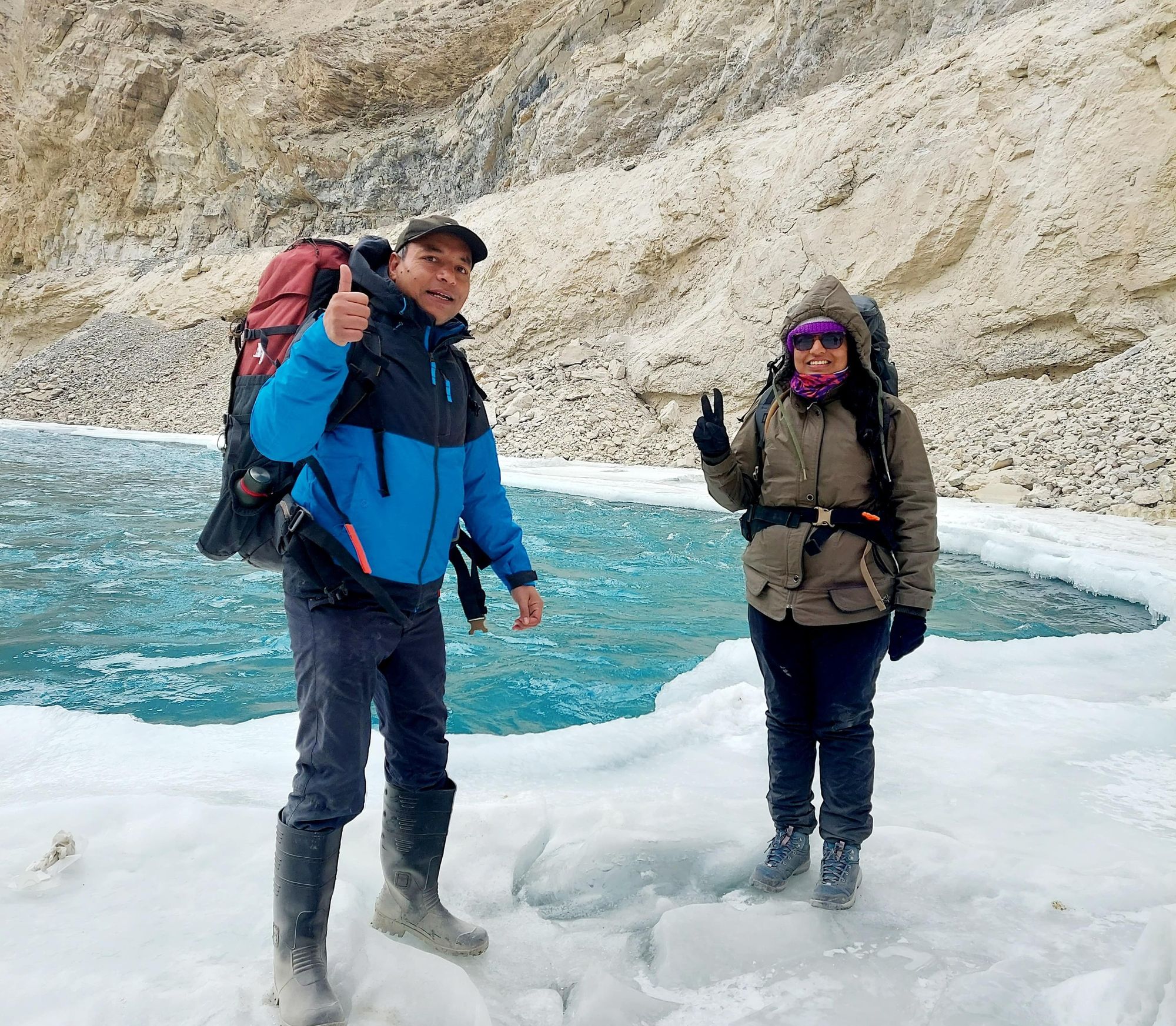
A Daily Adventure
From that moment onwards, I was in full trek mode. Gone were the fears and the doubts in my head. I was all in.
The landscape was so harsh yet so pure—snow-covered mountains towering over us, the frozen Zanskar River stretching out ahead like a glassy highway, and the silence.
It was so quiet, almost eerie, but in the most peaceful way possible.
Our daily life during the trek was simple but intense. Every morning, we layered up—about five layers of clothing to protect us from the brutal cold. We would walk for 5-6 hours a day, covering around 14-15 kilometres, each step carefully put on the ice.
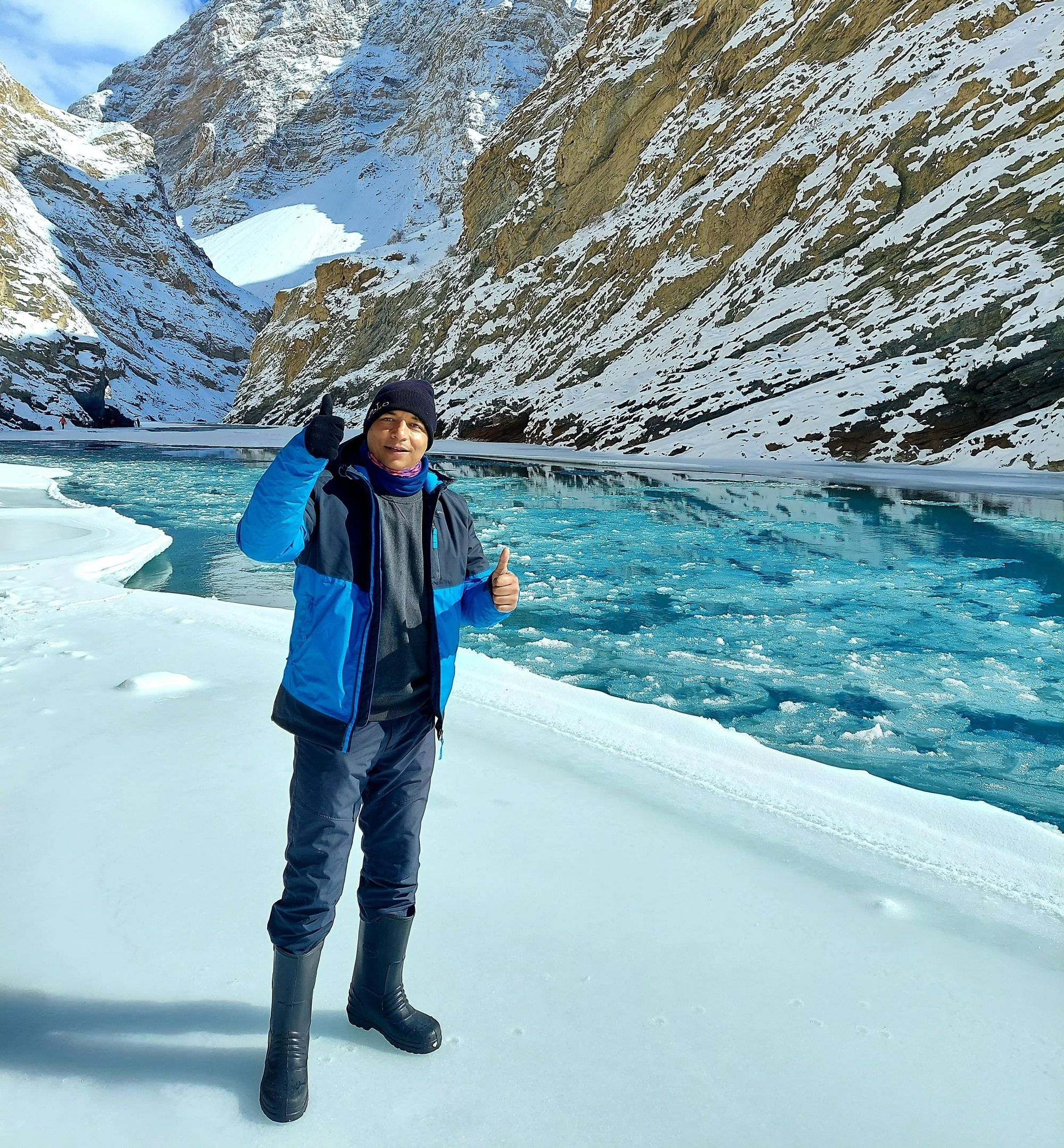
The key was to keep your body warm without sweating. So, we moved slowly and steadily, like a procession of frozen explorers on an Arctic mission.
"Stay steady and don't look down too much," Omkar would say as we made our way across particularly tricky sections. The ice beneath our feet sometimes creaked, and the river underneath would gurgle, reminding us of the thin line we were walking between adventure and danger.
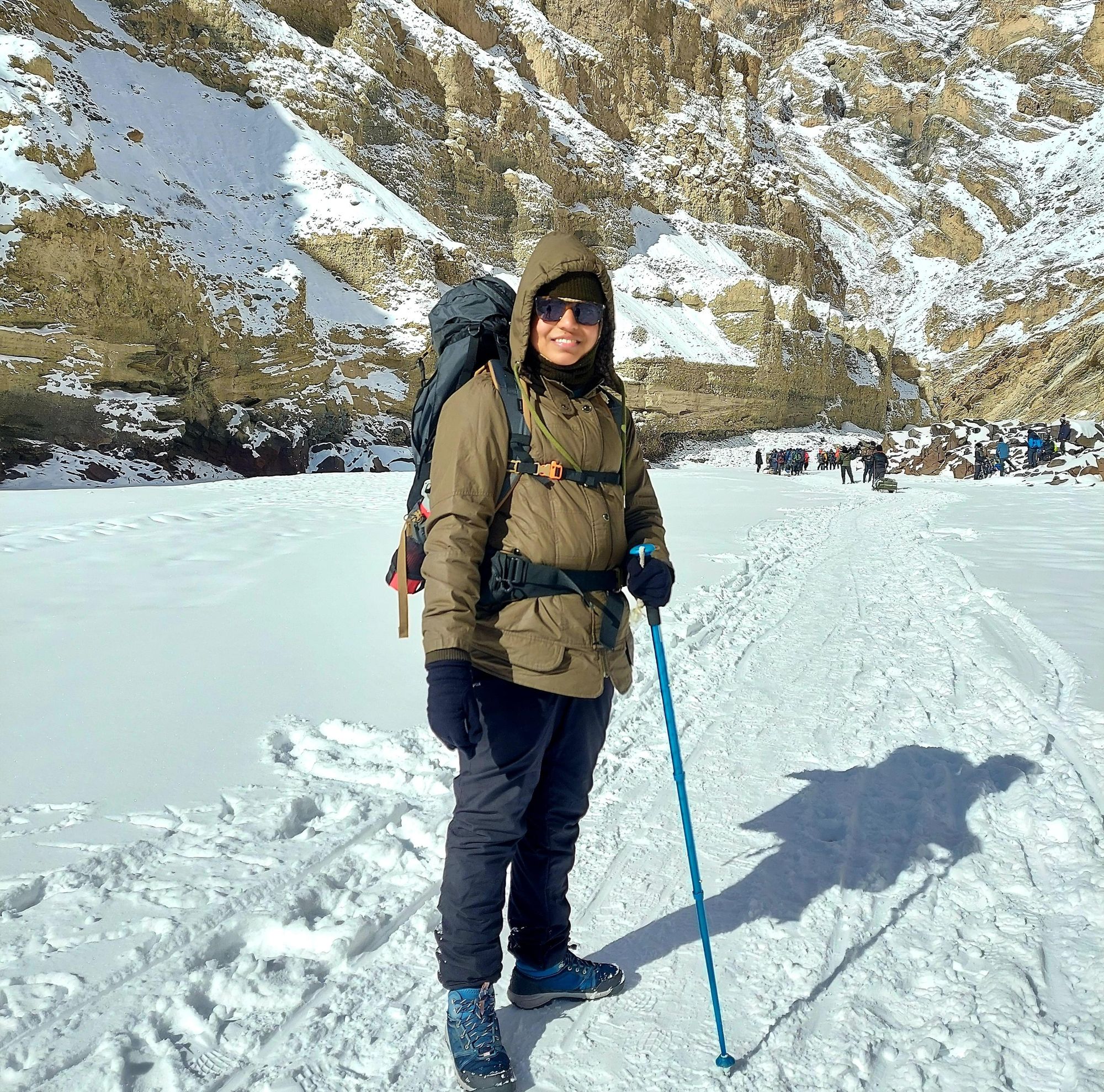
Under the Stars
Our campsites were the highlights – each day. After hours of walking on the frozen river, our team would set up tents, and we would huddle together around the stove.
The temperatures would drop drastically once the sun disappeared behind the mountains, so warmth became a luxury. The food was cooked right there at the campsite—nothing fancy, but after a long day of trekking, a hot meal was all we needed.
Canned goods? Forget about it. At these temperatures, they would freeze solid. Instead, the crew would draw water from the river—"fresh as it gets," Omkar would joke—and heat it up for cooking.
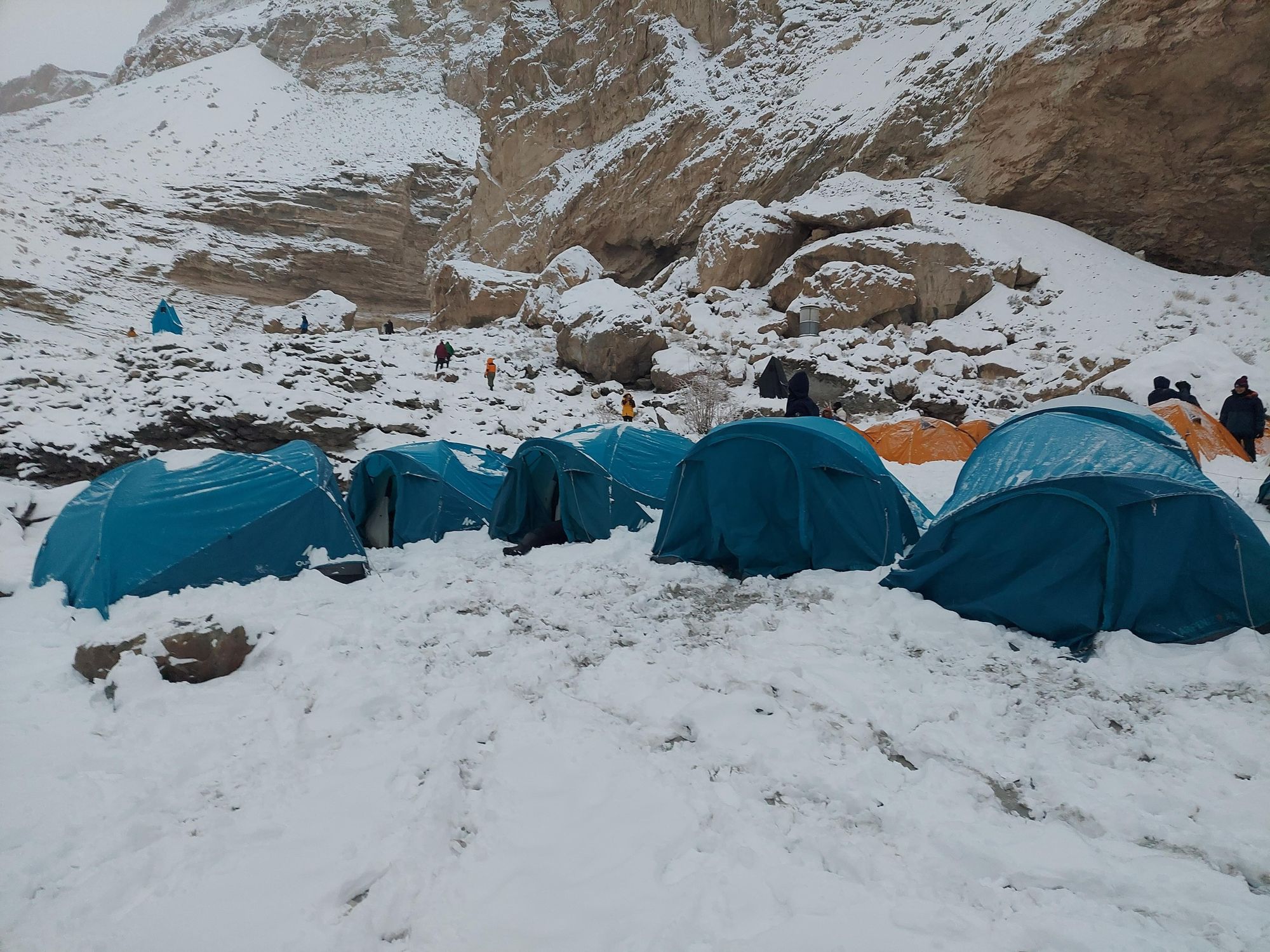
We ate simple meals—rice, dal, and some boiled vegetables. There was no room for extravagance here, just survival and the occasional tea to lift our spirits.
On one particularly clear night, we sat outside our tents, looking up at a sky blanketed with stars. The cold was biting, but the view made it worth it. "It’s like someone scattered diamonds across the sky," my friend whispered, and I couldn't agree more.
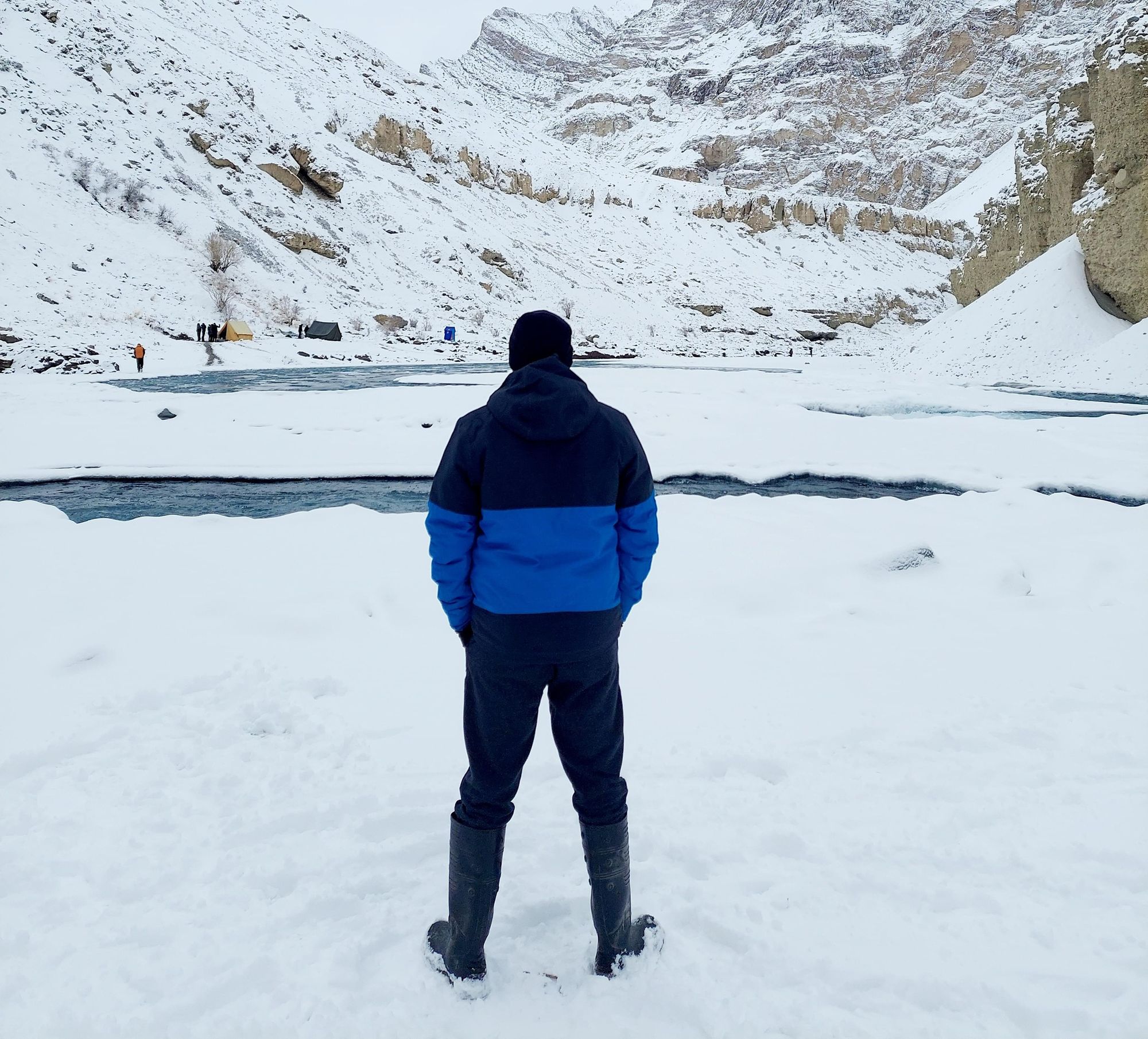
Challenges, Laughter, and AMS
Even after acclimatisation in Leh for two days, it’s a fact that AMS can strike at any time during the trek. You never know when you’ll feel that pressure in your chest, that shortness of breath, the dizziness.
"Listen to your body," Omkar kept reminding us. We took breaks whenever needed, rehydrated with water and electrolyte drinks, and snacked on dry fruits to keep our energy up.
But despite the hardships, we found our moments of fun and camaraderie. One of my friends—had a knack for slipping on the ice.
Every time he fell, instead of panicking, he’d laugh it off, making the rest of us chuckle as well. "It's just a fancy ice-skating rink!" he’d say every time he hit the ground.
His humour lightened the mood, especially during the harder stretches.
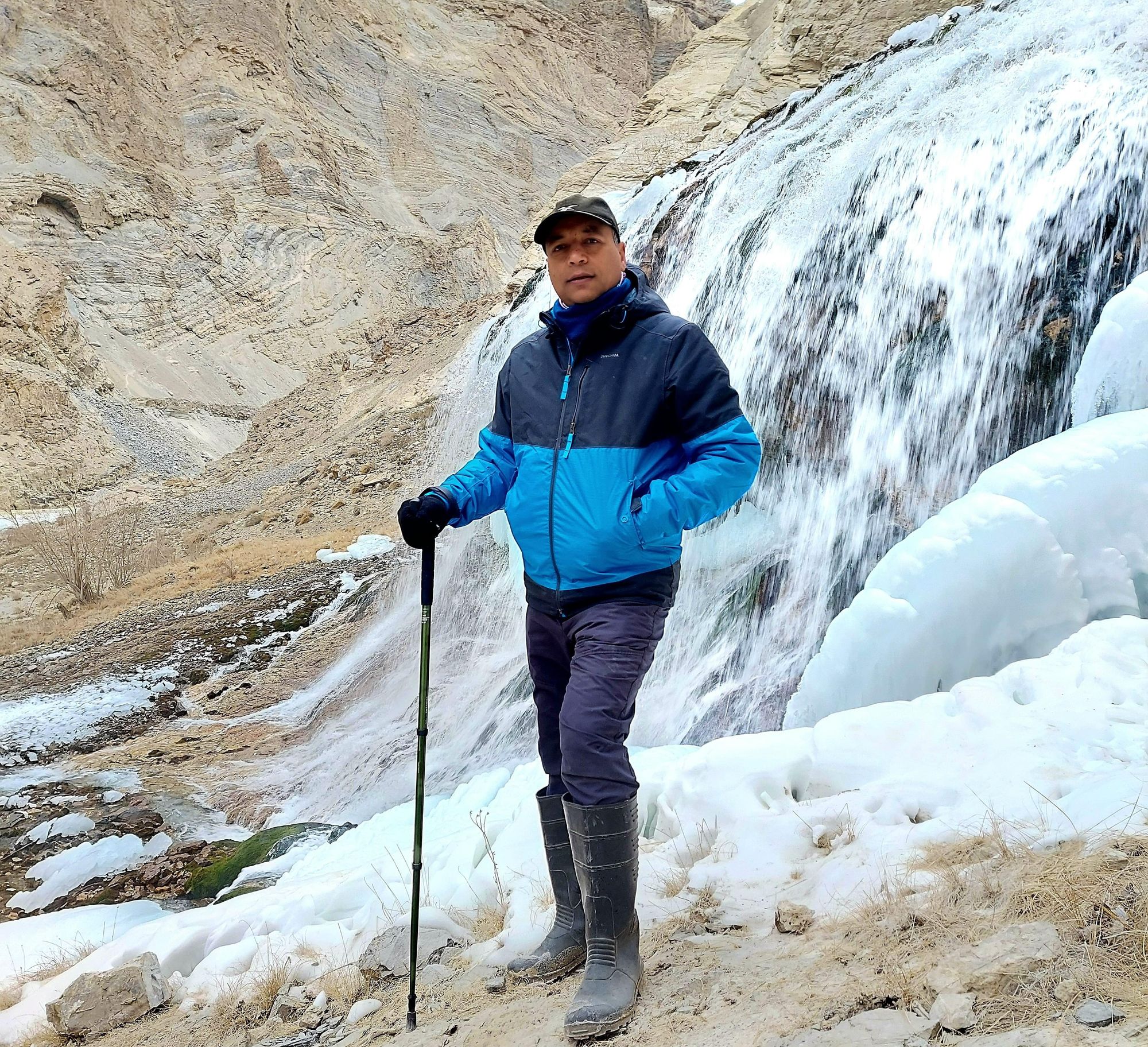
The Frozen Falls
One of the best moments of the trek was when we reached Naerak, where we saw the most beautiful sight— a gigantic frozen waterfall. It looked like something out of a fantasy novel—towering icicles frozen in mid-air, shimmering in the sunlight.
Even if Shakespeare or Gulzaar were to describe it, it wouldn’t be as beautiful as it really is. No amount of expensive cameras can capture what I saw, no pen can describe how beautiful it was.
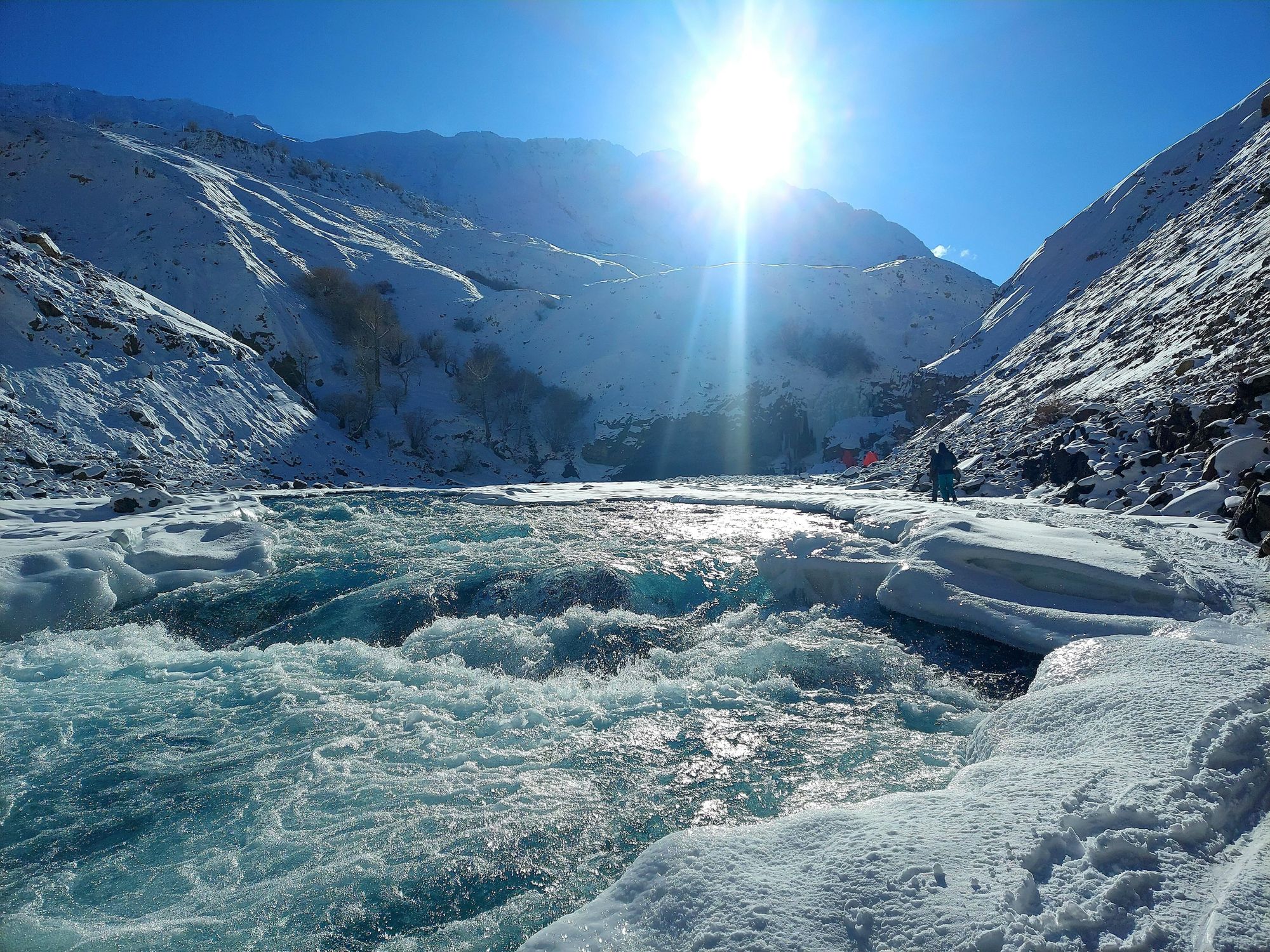
Standing there, I felt a deep sense of achievement. The cold, the exhaustion, the AMS, the frozen river beneath my feet—it all led to this moment.
This was the Chadar Trek, my pilgrimage, and it was every bit as treacherous and beautiful as I had imagined.
As I prepared to leave Naerak and start the trek back, I realised that I hadn’t just conquered a trek. I had pushed my limits, started my fears in the face, and came out the other side stronger.
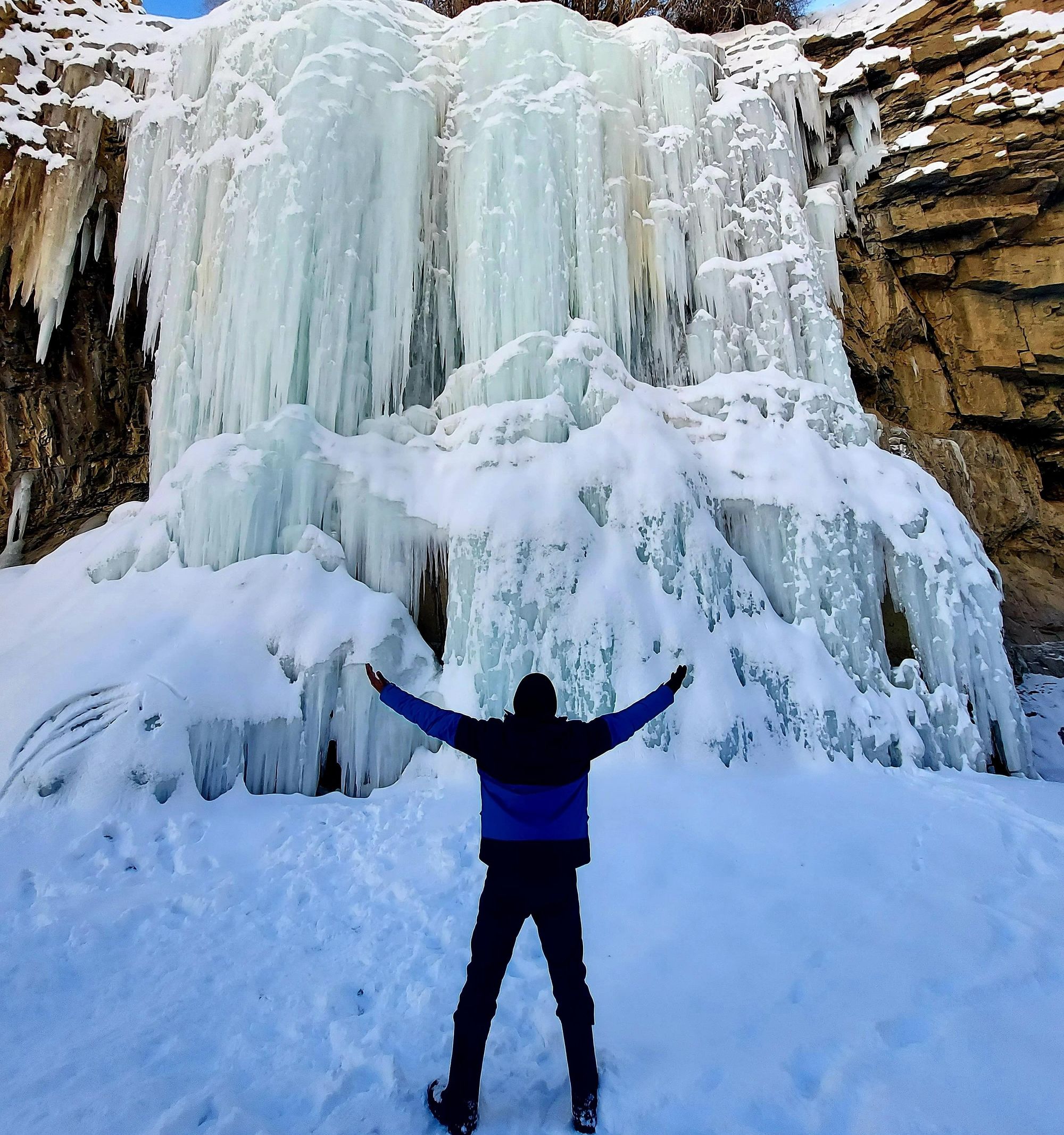
And by the time we completed our trek, there was a sense of quiet triumph among us. We had done it.
We had survived one of the most challenging treks in the world.
And we had stories— and oh, the stories we could tell.
Read More: Thrillophilia Kashmir Trek Reviews